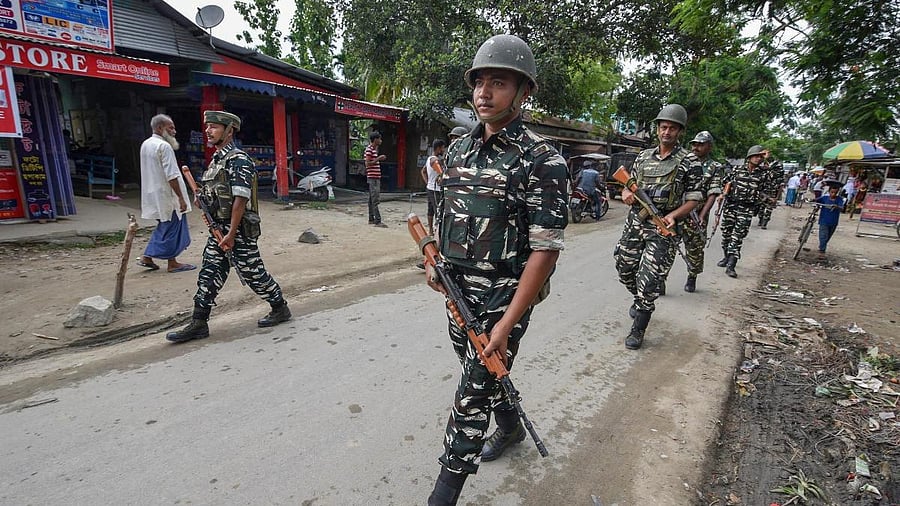
Representative image of Assam security personnel
Credit: PTI Photo
Guwahati: An ambush on a convoy of Assam Rifles in Manipur, firing on an army camp in Assam's Tinsukia and an IED explosion on a railway track in Bodoland region -- the fresh attacks by militant groups in the past one month, targeting security forces and public properties, have raised fears about militancy in the country's Northeast raising its head once again.
At least two personnel of security forces have been killed and eight others injured in two major attacks in Manipur and Assam, while the security forces have also killed two insurgents in Assam and arrested at least three others in connection with the attacks.
The security forces have issued an alert across the Northeast about entry of a group of armed cadres belonging to Ulfa-Independent, a banned insurgent group, from their hideouts in neighbouring Myanmar. The forces have launched an operation in Arunachal Pradesh and Assam in search of the group planning to carry out more attacks on the forces.
In a statement on October 19, Ulfa-I admitted that the fresh attacks were launched across the Northeast as per a "common understanding" among several groups such as People's Liberation Army (PLA), Ulfa-I and factions of NSCN. PLA mainly operates in Manipur while Ulfa-I and NSCN target Assam and Nagaland, respectively. The groups operate from their hideout in Myanmar and sends their cadres from time to time across the porous and remote borders to carry out attacks.
Sources in army said a combing operation was underway in Arunachal Pradesh and neighbouring eastern Assam districts like Tinsukia and Charaideo, where the Ulfa-I is still believed to be strong. The outfits use these routes to reach their camps in Myanmar.
Maoist threat
Presence of a Maoist operative from Jharkhand, who was killed on October 25 for his alleged involvement in an IED blast on a railway track near Kokrajhar in Assam's Bodoland region, surprised many. Police said the slain operative was trying to revive Maoist activities in Bodoland, where peace was established with the signing of a new Bodoland Accord in 2020. Bodoland region has remained peaceful since 2020. But the IED explosion on October 23 on a railway track raised an alarm.
Setback to peace process
While Northeast has a long history of militancy, the fresh attacks have come as a setback to the Centre's efforts to make the region free from the decades-old problem. The Centre has claimed that there has been a significant reduction in insurgency-related incidents due to steps taken by Narendra Modi government since 2014 and nearly 10,000 militants have laid down their weapons.
But Ulfa-I in Assam, factions of the NSCN in Nagaland and several armed groups, both in the valley and the hills in Manipur, have still remained a worry for the security forces deployed in the region. Most of these groups have remained firm on their demand for "sovereignty".
Timeline of recent incidents
September 19: An ambush by PLA militants killed two Assam Rifles personnel and injured five others in Manipur's Bishnupur district.
October 17: Three armymen injured in firing by Ulfa-I militants targeting an army camp in Assam's Tinsukia district.
October 23: An IED explosion on a railway track in Assam's Kokrajhar hit train services for five hours.
October 25: A "Maoist operative" from Jharkhand killed in Kokrajhar for his alleged involvement in the blast on track.